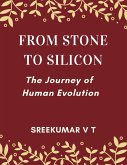"Hardware Evolution" takes readers on a captivating journey through the Silicon Revolution, exploring how the evolution of computer hardware has fundamentally shaped our modern world. This accessible book illuminates the exponential growth of computing power, the remarkable miniaturization of electronic devices, and the democratization of technology. From the room-sized ENIAC of the 1940s to today's powerful smartphones, the book traces the rapid pace of technological change and its far-reaching consequences.
The narrative is structured around three major sections: the rise of personal computing, the mobile revolution, and the Internet of Things. Each section demonstrates how hardware advancements have enabled new capabilities and transformed human behavior. For instance, the book highlights how Moore's Law has not only driven technological progress but also influenced business strategies and global economics. Readers will gain insight into how the microprocessor's invention revolutionized computing and how the evolution of digital cameras changed the way we capture and share memories.
What sets this book apart is its engaging storytelling approach, which puts readers in the shoes of inventors and engineers. By weaving together technical concepts with anecdotes and real-world examples, "Hardware Evolution" makes complex topics both understandable and entertaining for a general audience interested in technology. The book concludes with a glimpse into emerging technologies like quantum computing, inviting readers to contemplate the future of hardware and its potential impact on society.
The narrative is structured around three major sections: the rise of personal computing, the mobile revolution, and the Internet of Things. Each section demonstrates how hardware advancements have enabled new capabilities and transformed human behavior. For instance, the book highlights how Moore's Law has not only driven technological progress but also influenced business strategies and global economics. Readers will gain insight into how the microprocessor's invention revolutionized computing and how the evolution of digital cameras changed the way we capture and share memories.
What sets this book apart is its engaging storytelling approach, which puts readers in the shoes of inventors and engineers. By weaving together technical concepts with anecdotes and real-world examples, "Hardware Evolution" makes complex topics both understandable and entertaining for a general audience interested in technology. The book concludes with a glimpse into emerging technologies like quantum computing, inviting readers to contemplate the future of hardware and its potential impact on society.
Dieser Download kann aus rechtlichen Gründen nur mit Rechnungsadresse in A, B, BG, CY, CZ, D, DK, EW, E, FIN, F, GR, H, IRL, I, LT, L, LR, M, NL, PL, P, R, S, SLO, SK ausgeliefert werden.









